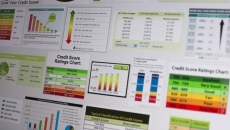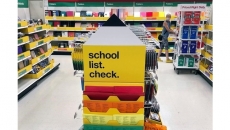For many students, “going back to school” this fall could be just a figure of speech.
As the pandemic persists, the decision about whether to allow in-person learning or keep classrooms closed is coming down to the wire. The possibilities of distance learning are influencing how much families anticipate spending on back-to-school purchases.
Parents with children in elementary school through high school plan to spend a record $789.49 on average this year, according to an annual survey conducted in early July by the National Retail Federation. This is up from last year’s $696.70.
“As consumers get more information on how their specific school is operating and how classes will take place, they might adjust those budgets a little bit,” says Katherine Cullen, senior director of industry and consumer insights at the NRF.
Here’s how to tailor your spending for distance learning amid the uncertainty.
EXPECT EXTRA PURCHASES
This year’s back-to-school list may feature items you haven’t had to shop for in the past. Students attending school virtually — whether part-time or full-time — will likely need laptops, tablets or desktops, plus headphones and other tech accessories to access and engage with their classes.
If multiple people will be learning and working simultaneously in your household, you may have to shell out to get everyone their own device. Consider whether you’ll also need to buy any furniture or materials, like a dry-erase board, to create a functional workspace. Working parents who need support might also incorporate child care costs, tutoring or other arrangements in their budgets.
Students starting school at home could return to the classroom. Your budget should still include staples like school supplies and clothes to cover different scenarios.
“Kids grow regardless of whether or not they’re in school,” Cullen says.
HOLD OFF ON OTHERS
To offset the cost of new supplies, find out which purchases you can skip while remote learning takes place. Pens and pencils will come in handy at home, but a new backpack or lunchbox probably won’t get much use.
“Once you get that list from your teacher, ask them, ‘What are the necessary items and what are those nice-to-haves?’” says consumer savings expert Andrea Woroch.
Before you shop for necessities, take inventory of what you already have, Woroch says. You could save money by scrounging up leftover office supplies from last school year.
“Things like half-filled notebooks can still be used. Pull out the pages that have already been written on and save the rest,” Woroch says. “See what you can make do with, even if you’re just making do for the next two to three months.”
TAP INTO RESOURCES
Next, research ways to get help acquiring the items you don’t have. This can reduce or eliminate additional expenses from your budget.
Some schools will lend devices like laptops and mobile hotspots to students without adequate internet access. If that isn’t the case at your school, Woroch recommends checking out organizations that connect people to low-cost internet and computers. Examples include EveryoneOn and PCs for People.
Many local libraries provide free education resources such as books, tutoring services and test-prep materials. You can also use social media groups or other online forums to find free or affordable clothing and supplies from families in your community.
SHOP SMART
Ultimately, you’ll likely have to purchase several items this back-to-school season. Strategic shopping can stretch your dollars further.
Establishing a digital relationship with retailers can help you navigate the process, especially if you’re unable to physically shop in stores or aren’t comfortable doing so. Follow retailers on social media or subscribe to their emails to receive news and sale information.
“Many brands and retailers are trying to be very upfront with what’s in stock, what to expect if you do decide to go to the store and what you can order online,” Cullen says.
Make sure to compare prices from different sellers. Do a quick internet search and use a price-comparison tool, such as the browser extension InvisibleHand, to track down the best deals.
“Retailers are constantly fluctuating prices, and with so many people shopping online right now, they’re really trying to maximize their profits,” Woroch says.
Another savings tip? Look for open-box or refurbished tech (ideally with a warranty) instead of buying new.
Give standard shopping advice a try, too: Ask about retailer price matching and price adjustment policies, seek out coupons and loyalty program discounts, and maximize your credit card rewards.






